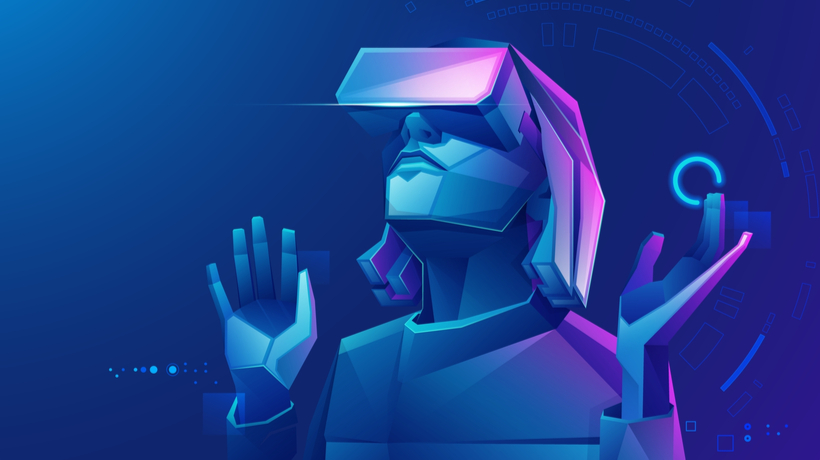
4 Ways The Metaverse Is Transforming Online Education
In the latter part of the 20th century, what we now call the “Digital Revolution” started developing rapidly. In a relatively short period of time, humanity went from using mechanical and analog to digital electronics. The outstanding plethora of technological advances has brought us to today, a time in which technology has become a part of every facet of our lives. The latest advancement everyone seems to be talking about is the metaverse. Facebook’s rebranding and Mark Zuckerberg’s speech about the next generation of the internet have had everyone wondering what the future will look like. Although it seems that the metaverse will have multiple uses, in this article we delve into the ways it can change the face of online education.
What Is The Metaverse?
Before we get into the details, let’s get one main question out of the way. Everyone is talking about the metaverse, but what is it exactly? The term “metaverse” was coined in Neal Stephenson’s 1992 science fiction novel Snow Crash, where humans interacted with each other in avatar form within a three-dimensional virtual world. In the novel, as in real life, the metaverse is a virtual 3D extension of the internet as we know it. It offers its users great freedom when it comes to real-time interaction, while also allowing them to build any online environment they can possibly imagine.
How Can The Metaverse Change Online Education?
Even though we still have a lot to expect from it, the metaverse has already shown great potential, especially in the gaming sector. For a few years now, certain video games have allowed users to interact freely with each other and even attend events such as parties and concerts via their avatars. However, gaming isn’t the only industry that can benefit from the metaverse. With online learning rising in popularity, educators, instructors, institutions, etc., are looking for ways to make distance learning more engaging and interactive. Let’s look at a few ways the metaverse can help with that.
1. Creating An Engaging And Life-Like Online Classroom
The main benefit eLearning can reap from the metaverse is its ability to bring online learning environments to life. Educators can build rooms that suit their educational needs, whatever those are. Their only limit is their imagination. At the same time, fully customizable avatars allow learners to interact with realistic objects and put theory into practice. In addition, allowing learners to use avatars that are realistic depictions of themselves and not vague cartoons adds an extra sense of realism to the virtual classroom, keeping learners more engaged in the learning process.
2. Promoting Communication
Unsurprisingly, interaction and communication are not that easy in online learning. Physical distance can create feelings of isolation and loneliness among learners and educators. To counteract these feelings and urge participants to interact, the metaverse allows instructors to create rooms where they can hold internal meetings. At the same time, learners can build study rooms where they can collaborate, study together, and socialize. Using their avatars, everyone can connect by seeing each other, easily share files, interact with the same objects, or play games. These features urge learners to connect with classmates and instructors, thus enhancing the learning experience.
3. Supporting Immersive Learning
The main technologies that support the metaverse are Augmented Reality (AR) and Virtual Reality (VR). Specifically, users are equipped with headsets and/or glasses that allow them to immerse themselves in the virtual world. Online learners have a lot to gain from immersive learning, as it helps them put theory into practice, retain knowledge better, and increase engagement. Using VR and AR, learners can participate in simulations and games as if they are physically there. For example, 3D illustrations can help them understand how a certain piece of machinery works or what a mathematical concept looks like in real life.
4. Enriching Gamification
The benefits of gamified learning have been known for many years now. It makes learning fun and effortless, improves problem-solving, offers real-time feedback, and enhances the overall learning experience. With the metaverse, gamification comes to life more than ever, as users are not just playing a game; they are inside the game! Combining VR/AR equipment and the endless possibilities of the metaverse, instructors can create game-based activities that learners can complete in thoroughly realistic environments that resemble a real-life scenario.
Conclusion
No matter how skeptical we are about it, the metaverse is the next stage of the internet and it is already here. The gaming industry has been quicker to explore its abilities, but soon it will find its way into other facets of our lives. eLearning is also expected to benefit greatly from the metaverse, using its immersive capabilities to make virtual learning environments more life-like, and learning itself more engaging and experiential. Although at this point we can only imagine what the future holds, it will be exciting to see the changes as they happen.
